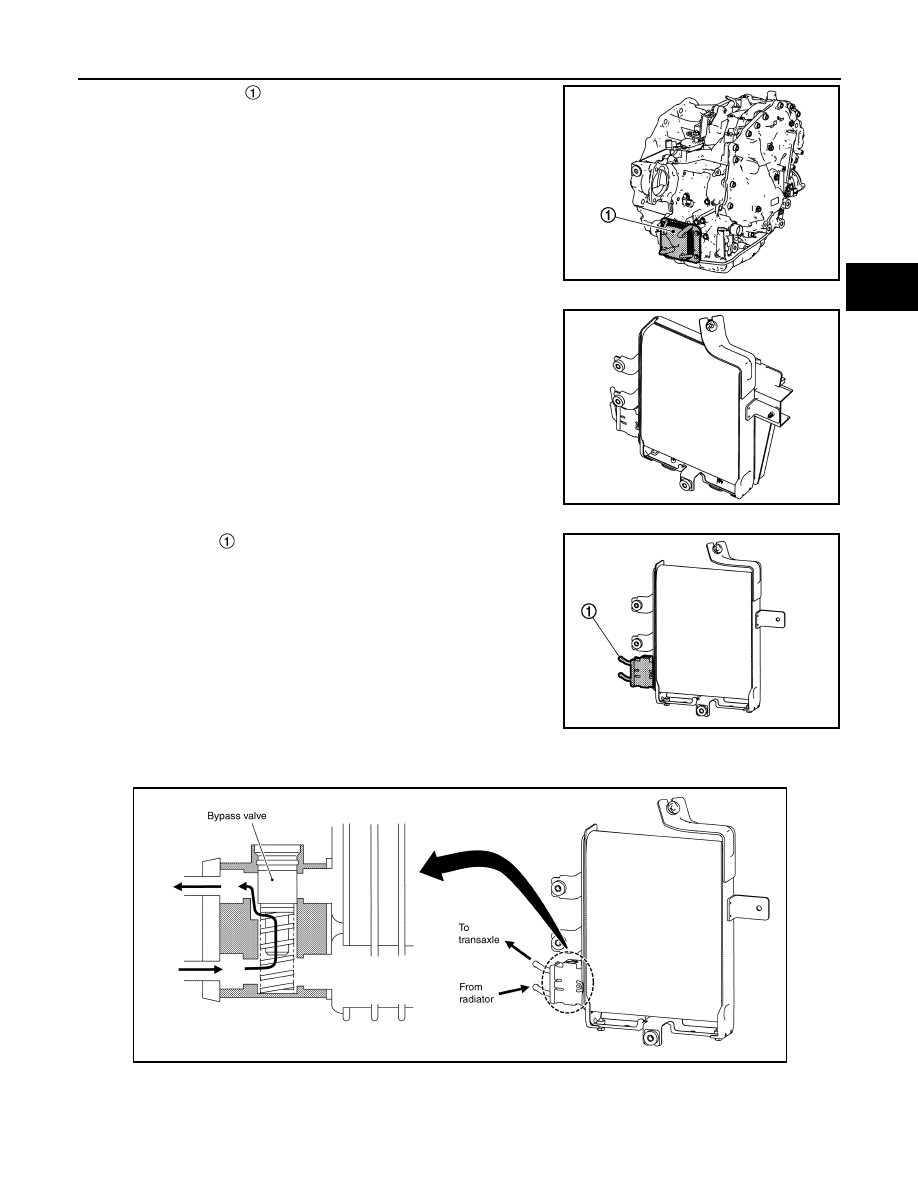Content .. 1140 1141 1142 1143 ..
Nissan Pathfinder. Manual - part 1142

STRUCTURE AND OPERATION
TM-27
< SYSTEM DESCRIPTION >
[CVT: RE0F10E]
C
E
F
G
H
I
J
K
L
M
A
B
TM
N
O
P
• The CVT oil warmer is installed on the front part of transaxle
assembly.
• When engine is started while engine and CVT are cold, engine
coolant temperature rises more quickly than CVT fluid tempera-
ture. CVT oil warmer is provided with two circuits for CVT and
engine coolant respectively so that warmed engine coolant warms
CVT quickly. This helps shorten CVT warming up time, improving
fuel economy.
• A cooling effect is obtained when CVT fluid temperature is high.
CVT Fluid Cooler
• The CVT fluid cooler is installed to the vehicle front LH.
• The CVT fluid cooler prevents CVT fluid temperature from an
abnormal increase while driving the vehicle. When flowing into the
CVT fluid cooler, CVT fluid is cooled by driving blast while driving
the vehicle.
Bypass Valve
• The bypass valve is installed to the CVT fluid cooler.
• Bypass valve controls CVT fluid flow.
• When CVT fluid temperature is low, the bypass valve is open. Most of CVT fluid therefore returns to the tran-
saxle without flowing into the cooler core that has larger flow resistance.
JSDIA4001ZZ
JSDIA4002ZZ
JSDIA4091ZZ
JSDIA4092GB